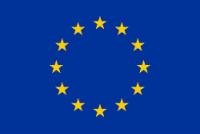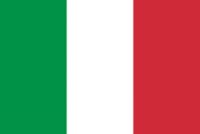-
Funding
Funding
HFSP supports novel, innovative and interdisciplinary basic research focused on the complex mechanisms of living organisms. A clear emphasis is placed on novel collaborations that bring biologists together to focus on problems at the frontier of the life sciences.
-
Awardees
Awardees
In this section you find information about the awardees in the HFSP scientific programs. This includes a searchable database of HFSP awardees, information on the HFSP Nakasone Award and other achievements by HFSP awardees.
- News & Impact
-
Events
Events
HFSP promotes and participates in several events every year. We are committed to bringing together the scientific community and forging new opportunities to network and have scientific discussions that help to create bridges and partnerships for the future of frontier science.
-
About
About
The Human Frontier Science Program is a program of funding for frontier research in the life sciences. It is implemented by the International Human Frontier Science Program Organization (HFSPO) with its office in Strasbourg. Here you can find all you need to know about the HFSPO.
Awardees
Design and build a synthetic single cell epigenetic oscillator
ABDULLA Amith Zafal (INDIA)
Physics - Brandeis University - Waltham - United States
KONDEV Jane (Host supervisor)
RAGUNATHAN Kaushik (Host supervisor)
Mechanical control of hidden embryonic boundaries
MONGERA Alessandro (ITALY)
- University College London - London - United Kingdom
SERRA Mattia (ITALY)
- The Regents of the University of California, San Diego - San Diego - United States
ALMUEDO-CASTILLO Maria (SPAIN)
- Centro Andaluz de Biología del Desarrollo/ CSIC - Sevilla - SPAIN
Scaling the impact of viruses from single cells to the global methane cycle
MALIK Ashish (INDIA)
- University of Edinburgh - Edinburgh - United Kingdom
EMERSON Joanne (United States)
- The Regents of the University of California (University of California Davis) - Davis - United States
NICOL Graeme (United Kingdom)
- CNRS (Centre National de la Recherche Scientifique/French National Centre for Scientific Research) - Ecully - FRANCE
ANANTHARAMAN Karthik (United States)
- University of Wisconsin-Madison (Board of Regents University of Wisconsin System) - Madison - United States
Why do stressed bats shed more viruses?
ANSIL B R (INDIA)
Department of Biology - The Board of Regents of the University of Oklahoma (University of Oklahoma) - Norman - United States
BECKER Daniel (Host supervisor)
BANERJEE Arinjay (Host supervisor)
Trapped in ice
BABIN Marcel (CANADA)
- Laval University (Université Laval, Québec) - Quebec - CANADA
MARÉCHAL Eric (FRANCE)
- Laboratoire de Physiologie Cellulaire et Végétale - Grenoble - FRANCE
PRAKASH Manu (INDIA)
- The Board of Trustees of the Leland Stanford Junior University - Stanford - United States
FRIPIAT Francois (BELGIUM)
- Université libre de Bruxelles (Free University of Brussels, ULB) - Brussels - BELGIUM
Deciphering the evolution, cellular biology and biogeochemistry of symbioses in anaerobic eukaryotes
HUSNIK Filip (CZECH REPUBLIC)
- Okinawa Institute of Science and Technology Graduate University - Onna-son, Okinawa - JAPAN
STAIRS Courtney (CANADA)
- Lunds universitet (Lund University) - Lund - SWEDEN
BEINART Roxanne (United States)
- University of Rhode Island - Narragansett - United States
Discovering the chemical space of bioactive modified nucleotides and their enzymatic repertoire
BELTRAO Pedro (SWITZERLAND)
- Swiss Federal Institute of Technology in Zurich (ETH Zurich/ETH Zürich) - Zurich - SWITZERLAND
CORREIA-MELO Clara (PORTUGAL)
- Leibniz Institute on Aging - Fritz Lipmann Institute e.V. - Jena - GERMANY
FUGGER Kasper (DENMARK)
- University College London Cancer Institute - London - United Kingdom
Neural mechanisms for dynamic action planning and execution as we move through space
BENCIVENGA Federica (ITALY)
Département de neurosciences - University of Montreal (Université de Montréal) - Montreal - CANADA
GREEN Andrea (Host supervisor)
CISEK Paul (Host supervisor)
Investigating the effects of chronic stress on gut-brain interactions
BIGLARI Nasim (GERMANY)
Bioelectronics Group - Massachusetts Institute of Technology - MIT - Cambridge - United States
ANIKEEVA Polina (Host supervisor)
Coupling massive gene synthesis with generative sequence models to decipher antibiotic resistance
BISARDI Matteo (ITALY)
Michael Smith Laboratories - University of British Columbia - Vancouver - CANADA
TOKURIKI Nobuhiko (Host supervisor)
Quantifying the 4-dimensional microenvironment to explain the coexistence of social insects
BISHOP Tom (United Kingdom)
- Cardiff University - Cardiff - United Kingdom
DAVIES Andrew (SOUTH AFRICA)
- President & Fellows of Harvard College - Cambridge - United States
SENIOR Rebecca (United Kingdom)
- School of Biological & Biomedical Sciences, Durham University - Durham - United Kingdom
JANION-SCHEEPERS Charlene (SOUTH AFRICA)
- University of Cape Town - Cape Town - SOUTH AFRICA
Structural basis of the human spliceosome quality control
BOREIKAITE Vytaute (LITHUANIA)
Plaschka group - Research Institute of Molecular Pathology (Forschungsinstitut f molekulare Pathologie GesmbH, IMP) - Vienna - AUSTRIA
PLASCHKA Clemens (Host supervisor)
Probing the evolutionary ecology of cognition through High-Density Diffuse Optical Tomography
BOTERO Carlos (United States)
- The University of Texas at Austin - Austin - United States
CULVER Joseph (United States)
- Washington University in St.Louis - St. Louis - United States
GÜNTÜRKÜN Onur (GERMANY)
- Ruhr University Bochum (Ruhr-Universität Bochum) - Bochum - GERMANY
Protein dynamics and function in the evolutionary history of the CO2 fixing enzyme Rubisco
BUCHANAN Charles (UK)
Evolutionary Biochemistry - Max Planck Institute for Terrestrial Microbiology - Marburg - GERMANY
HOCHBERG Georg (Host supervisor)
Deciphering the role of ion distribution in mitochondria for long-term memory formation
BUSCH Karin (GERMANY)
- University of Münster (Westfälische Wilhelms-Universität Münster) - Muenster - GERMANY
TOMKINSON Nicholas (United Kingdom)
- University of Strathclyde - Glasgow - United Kingdom
JONAS Elizabeth (United States)
- Yale University - New Haven - United States
3D-bioprinting meets machine learning: a novel tool to decipher the determinants of viral tropism.
CASTRILLO Gabriel (SPAIN)
- University of Nottingham - Nottingham - United Kingdom
VALLI Adrian (ARGENTINA)
- Spanish National Research Council (Consejo Superior de Investigaciones Científicas, CSIC) - Madrid - SPAIN
STEGMAYER Georgina (ARGENTINA)
- National University of the Littoral (Universidad Nacional del Litoral, UNL) - Santa Fe Capital - ARGENTINA
How predictable is evolution? Eco-evolutionary dynamics of fungi across biological scales
MANHART Michael (United States)
- Rutgers Biomedical and Health Sciences - Newark - United States
WORTEL Meike (NETHERLANDS)
- University of Amsterdam - Amsterdam - NETHERLANDS
CHARLEBOIS Daniel (CANADA)
- University of Alberta - Edmonton - CANADA
Targeted epigenome editing using induced proximity-based small molecules
CHIBA Kosuke (JAPAN)
Department of Chemistry, Department of Molecular and Cell Biology - The Regents of the University of California, Berkeley - Berkeley - United States
NOMURA Daniel (Host supervisor)
Unambiguous Biosignatures for Life Detection
CLEAVES Henderson (United States)
- Howard University - Washington - United States
VAN ZUILEN Mark (FRANCE)
- French National Centre for Scientific Research (Centre national de la recherche scientifique,CNRS) - Plouzané - FRANCE
MCMAHON Sean (United Kingdom)
- University of Edinburgh - Edinburgh - United Kingdom
Optogenetic control of organelle “chatter” and effects on calcium dynamics in human cardiomyocytes
ENTCHEVA Emilia (United States)
- The George Washington University - Washington - United States
SATO Moritoshi (JAPAN)
- The University of Tokyo - Tokyo - JAPAN
COLMAN Michael (United Kingdom)
- The University of Leeds - Leeds - United Kingdom


































